
If you have a Sony PSP3000 and the battery drains quickly, charges quickly, and even after replacing the battery, it still charges rapidly and has a very short standby time once fully charged, and if you measure the charging pins and find that they only output a 0.7Hz pulse waveform with a maximum value of 4.2V, it is likely that the charging chip is damaged (other chip functions, like plug-and-play, work fine). However, if you can't find this chip model anywhere online, what should you do?
If you're curious to know, keep reading!
Since it's a lithium battery, you can use a TP4056 chip to replace the original charging chip's charging function.
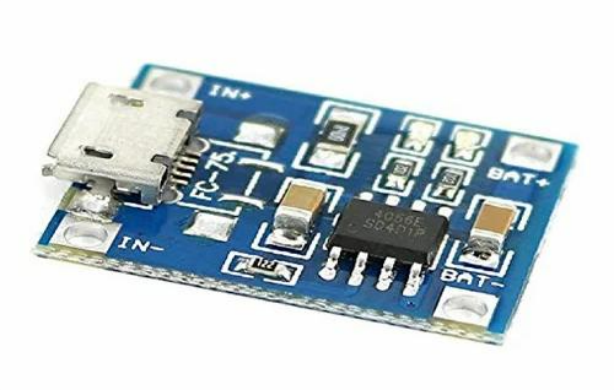
The default configuration for the TP4056 provides a maximum output of 1000mA. When you get it, you'll need to remove the micro USB head first. Then, open up the PSP, remove the motherboard, and take out the UMD module—this will leave you with a perfect slot.
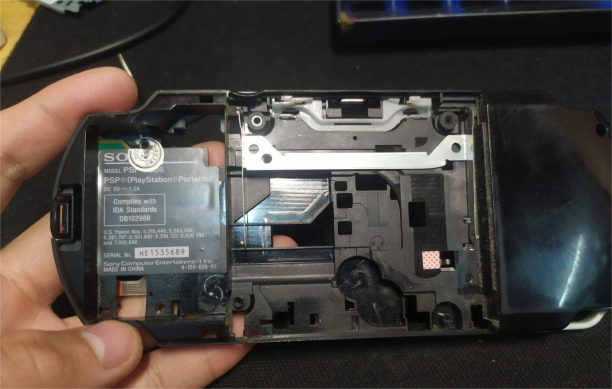
Next, you can stick the TP4056 onto the PSP using phone screen adhesive. You’ll need to disconnect the original charging chip's output inductor, solder a Dupont wire to a nearby capacitor, and thread it through the small hole above. Additionally, find the 5V input filtering capacitor on the back of the motherboard and solder another Dupont wire to it, passing it through the same small hole.
Disconnecting the charging inductor is a crucial step because the TP4056 cannot charge while under load; otherwise, unexpected issues may arise. Be cautious!
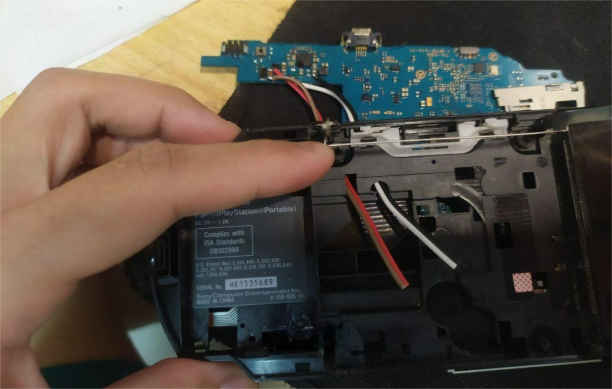
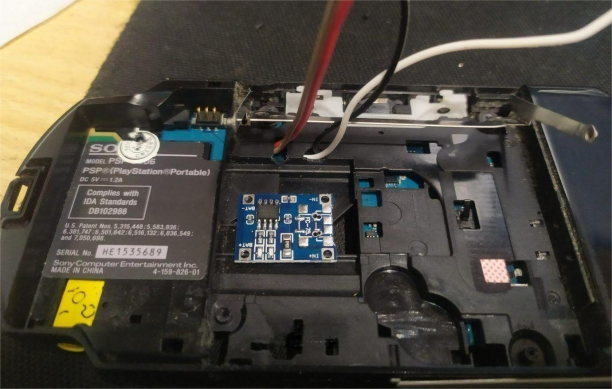
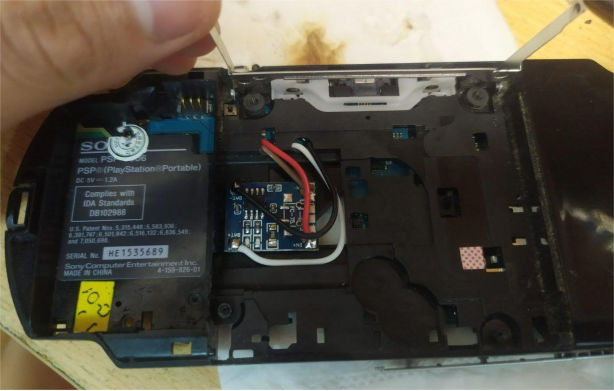
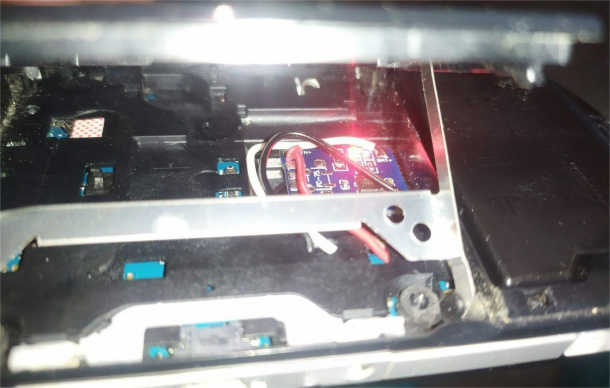
After testing, it works perfectly. The charging speed is back to normal, and the battery doesn't drain as quickly once it's charged. This is an alternative repair method that works!




